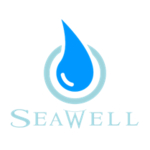Innovative SeaWell Desalination Buoys Proposed for Vandenberg Space Force Base
Vandenberg moving toward securing future water supply as 20-year Western Drought reaches historic extremes
SANTA BARBARA, Calif.–(BUSINESS WIRE)–SeaWell LLC, a company formed by Ecomerit Technologies, the Santa Barbara renewable energy pioneer and long-time US Department of Energy partner in technology innovation, is working with Vandenberg Space Force Base to deploy SeaWell’s ocean desalination buoys to produce freshwater for the Base. SeaWell buoys can be rapidly deployed to help meet the critical need for a dependable water supply. A single buoy provides a yearly water supply comparable to 5,200 households.
SeaWell’s buoys are an advanced alternative to large, conventional desalination plants, offering greater energy efficiency and operation that is environmentally friendly to marine life. Vandenberg has been identified as one of the most drought-impacted bases in the country by the Government Accounting Office1, and is highly motivated to implement SeaWell’s solution. For California, the Vandenberg project is a vital first step to a new, reliable, coastal water supply.
The Vandenberg SeaWell Project will be located offshore of the Base’s first Space Launch Complex, which dates to the 1950’s and is now inactive. Proximity to the shoreline makes it ideal for repurposing the launch pads for the Project, which will also be connected to the Base’s solar energy microgrid. It also ensures a dependable supply of water which is critical to the launch process.
“We are pleased SeaWell has prioritized Vandenberg for this project. Water is essential for mission-critical and support activities, and reliability of this new water supply has the potential to substantially backstop our current drought-prone sources,” said Ken Domako, Vandenberg’s Chief of Portfolio Optimization.
Vandenberg is working with SeaWell’s subsidiary, Ocean Portal Water Company of California, who creates water supply projects with SeaWell buoys by coordinating customer interests with project sites and conducting project development. Ocean Portal’s mission is to provide water to municipal / institutional customers on long-term supply contracts as a reliable alternative to State Water and over-drafted groundwater basins.
SeaWell technology development started in 2018, led by Jim Dehlsen, a pioneer in US wind and marine renewable energy industries. He is known as “the father of the U.S. wind power industry” for his seminal work in wind turbine design and power project development that became General Electric’s entry to the wind industry.
Dehlsen describes SeaWell’s approach to desalination, saying, “As with wind turbines, SeaWell is based on modular, assembly-line-built systems, designed for water affordability and to be a benign presence in the ocean that can be quickly put into operation.”
SeaWell’s patented floating desalination buoys will utilize commercial, state-of-the-art reverse osmosis technology to convert seawater to freshwater with less environmental impact than conventional onshore plants, utilizing unique intake and brine discharge designs. SeaWell buoys are also designed to be more energy efficient in transferring only freshwater to shore rather than roughly twice the volume of seawater required for an onshore plant. In addition to buoys, SeaWell supplies a small-footprint, onshore, post-treatment module called a “Water Station” that receives water from the buoys.
Santa Barbara County Supervisors have expressed support for the Vandenberg Project as an important measure for water reliability. The current water emergency has forced a 95% reduction of California state water deliveries, which is being felt by water purveyors across the County. “Ocean Portal sees this project as an opportunity for different stakeholders to come together to solve such a life-changing problem as water scarcity,” said Peter Stricker, Ocean Portal’s President. Stricker went on to say, “The project is an important demonstration of an approach to water supply that can benefit Santa Barbara County as well as greater coastal California.”
With support from the State to establish Water Station connections along the coast, buoys could be floated out quickly to where most needed, similar to State support for EV charging stations that gave great impetus to the nascent EV industry. Provided State and local support, SeaWell studies indicate that “basic needs” water could be delivered to millions of coastal households within 5 years, while allowing State Water to be redirected to Central California communities and agriculture who have fewer water options.
For more information about SeaWell go to www.seawellwater.com.
1 Government Accounting Office; Report to the Committee on Armed Services, U.S. Senate; “WATER SCARCITY DOD Has Not Always Followed Leading Practices to Identify At-Risk Installations;” November 2019
Contacts
Devon Ford
California Strategies
dford@calstrat.com or (916) 541-5619
Elizabeth Diaz
California Strategies
ediaz@calstrat.com or (831) 372-6271




